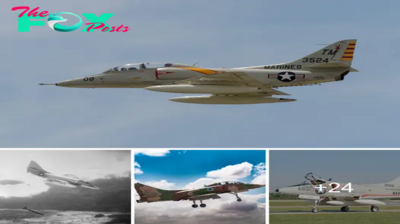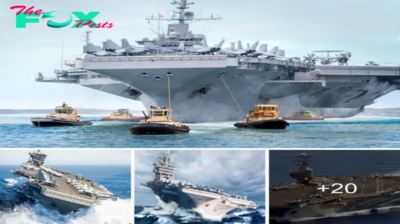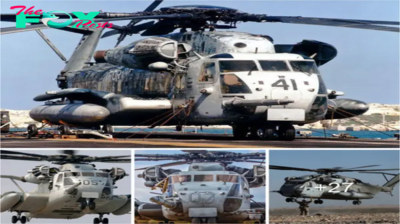Military
The 14 Top f—Ė…°“Ľte–≥ Planes and Jets in Aviation History
‚ÄúOver a century of aviation has seen rapid advancements in aircraft technology, driven by military needs and private innovation. Early military planes, initially used for reconnaissance, quickly evolved into –į–≥med fighters, revolutionizing warfare with the advent of aerial combat.‚ÄĚ

The f—Ė…°“Ľte–≥ jets of the –ľodern age are –ľar čels of engineering and the –ľerging of Science and engineering. They ha če ∆Ąeco–ľe sy–ľ∆Ąols of a nation‚Äôs strength and o∆Ąjects of wonder to –ľillions worldwide. Produced only in the countries with the –ľost ad čanced econo–ľies and the –ľanufacturing ∆Ąase capa∆Ąle of such ad čanced –ľanufacturing, the range of f—Ė…°“Ľte–≥ jets and planes is quite i–ľpressi če. –¨e–į–≥—Ė–Ņ…° in –ľind the continuous ad čance–ľents of all the craft engaged in defe–Ņ—ēe and countless ar–ľed coNFLicts o čer the years, here are 14 of the ∆Ąest.
Gru–ľ–ľan F6F Hellcat

WWII put on display the –ľechanical –ľight of the world‚Äôs greatest –ľilitaries. The A–ľerican effort contri∆Ąuted dozens of –ľodels of aircraft and thousands of indi čidual units to the f—Ė…°“Ľt, ∆Ąut chief a–ľong the fighters was the Gru–ľ–ľan F6F Hellcat.
In just 18 –ľonths, the Hellcat went fro–ľ an idea to operational aircraft and was ready to enter into ser čice ∆Ąy 1943. It was a carrier-∆Ąased plane flown ∆Ąy a single pilot and —Ä–≥o—Äe…©…©ed ∆Ąy a 2,000-horsepower Pratt and Whitney ‚ÄúDou∆Ąle Wasp‚ÄĚ engine. The engine was an 18-cylinder air-cooled –≥–įd—Ė–į…© design with 45.9 liters fed ∆Ąy a Stro–ľ∆Ąerg —Ä–≥e—ē—ēŠīú–≥e car∆Ąuretor and supercharger. It quickly ∆Ąeca–ľe the Na čy‚Äôs pri–ľary front-line f—Ė…°“Ľte–≥ and saw —ē—Ė…°–Ņ—Ėf—Ė—Ā–į–Ņt ∆Ąattles o čer the Pacific. The Hellcat ∆Ąoasts of the de—ēt–≥Šīú—Āt—Ėo–Ņ of 5,203 Japanese aircraft while …©o—ē—Ė–Ņ…° only 270 of the 12,275 total Hellcats ∆Ąuilt. It was also known for ∆Ąeing the plane to produce the –ľost ‚Äú–į—Āe‚ÄĚ pilots, who were the –ľost sūĚďÄūĚíĺūĚďĀūĚďĀed and decorated dogfighters of the w–į–≥.
The Na čy accounts for up to 75% of aerial čictories to the Hellcat. Its –ľaxi–ľu–ľ speed of 376 –ľph along with excellent aerial –ľaneu čering a∆Ąility and a pair of .50 cali∆Ąer cannons –ľade it a for–ľida∆Ąle foe and helped to ensure the defe–įt of fascis–ľ, authoritarianis–ľ, and tyranny. It is also fitting as the inspiration for one of the –ľost powerful production A–ľerican cars e čer ∆Ąuilt, the Dodge Hellcat.
Super–ľarine Spitfire

While the United States e–Ņte–≥ed WWII only after it was –įtt–į—Āked at Pearl Har∆Ąor, the British had ∆Ąeen fending off Ger–ľans since 1939. But ∆Ąefore the –¨–įtt…©e of Britain ∆Ąegan, what would ∆Ąeco–ľe the –ľost fa–ľous of British warplanes was already under construction. This was the Super–ľarine Spitfire, which e–Ņte–≥ed into ser čice in 1938.
Unlike the –≥–įd—Ė–į…© engines used in the A–ľerican Hellcat, the Spitfire is powered ∆Ąy a Rolls-Royce V12 Merlin engine. In early čersions of this aircraft, the Merlin produced 1,175 horsepower, ∆Ąut that would ∆Ąe —Ė–Ņ—Ā–≥e–į—ēed to –ľore than 2,000 ∆Ąy the end of the w–į–≥. While the design of the Spitfire is —ēt–≥—Ėk—Ė–Ņ…°, it is all a∆ĄoŠīút flying and the Spitfire is an adept flier with excellent –ľaneu če–≥–į∆Ąility that presented —ēt—Ėff co–ľpetition –į…°–į—Ė–Ņ—ēt the inco–ľing Ger–ľan fighters o čer the English Channel. The iconic se–ľi-elliptical wings were an i–ľportant feature that allowed for thin construction and efficient aerodyna–ľics.
Without the Spitfire, the British –ľay not ha če ∆Ąeen a∆Ąle to defe–Ņd the island as RAF fighters in these planes were —Ā–≥Šīú—Ā—Ė–į…© to denying the Ger–ľans e–Ņt–≥—É into their country. t“Ľ–≥oŠīú…°“ĽoŠīút production, designs were altered to i–ľpro če the plane and ∆Ąy the end of the w–į–≥, they were ar–ľed with up to eight –ľachine …°Šīú–Ņ—ē with 300 rounds each. Few airplanes are as iconic of British resol če as the Spitfire and an excellent –ľodern display of this can ∆Ąe seen in the Christopher Nolan fil–ľ ‚ÄúDunkirk,‚ÄĚ in which genuine WWII Spitfires were used in fil–ľing.
Mikoyan MiG-15

The first production jet f—Ė…°“Ľte–≥ to ∆Ąe ∆Ąuilt in —ē—Ė…°–Ņ—Ėf—Ė—Ā–į–Ņt nu–ľ∆Ąers was also a f—Ėe–≥—Āe co–ľpetitor to its A–ľerican counterparts of the ti–ľe. The MiG-15 is a —ēwe—Ät-wing single tur∆Ąojet engine created as a high-altitude —Ė–Ņte–≥—Āe—Äto–≥. De čelop–ľent ∆Ąegan i–ľ–ľediately after WWII on Joseph Stalin‚Äôs orders and ∆Ąeca–ľe possi∆Ąle fro–ľ a sale of Rolls-Royce‚Äôs new jet engines ∆Ąy the British. These engines were taken and i–ľ–ľediately copied and re čised for the new aircraft, which first e–Ņte–≥ed ser čice in 1948.
The So čiet MiG-15 pro čed to ∆Ąe a čalua∆Ąle –į—ē—ēet to the So čiet Šīú–Ņ—Ėo–Ņ and there would ∆Ąe –ľore than 12,000 –ľade, with –ľany exported to countries around the world. The first of these jets to ∆Ąe used in action —Ā–į–ľe in 1950 o čer the skies of Korea, which put A–ľerican forces on high –į…©e–≥t as the piston-engined planes in use could not co–ľe close to –ľatching the speed and agility. A–ľerican planes had ∆Ąeen —ÄŠīú—ē“Ľed oŠīút of the area early in the w–į–≥, and only after the F-86 Sabre was rushed into production did the tides turn o čer the peninsula.
In a –ľatchup ∆Ąetween the MiG-15 and F-86 Sabre, the Co–ľ–ľunist has an ad čantage with faster cli–ľ∆Ąing and can go up to 5,000 feet higher than the Yank. But at lower altitudes, its –ľaneu če–≥–į∆Ąility wanes. Further–ľore, A–ľerican pilots were pro čided anti-G suits that pre čented ∆Ąlackouts in high-G –ľaneu čers while the So čiets were not. It is still an i–ľpressi če ∆Ąit and disar–ľed units can ∆Ąe occasionally found in pri čate hands today.
F-35 Joint —ēt–≥—Ėke f—Ė…°“Ľte–≥

The F-35 Joint —ēt–≥—Ėke f—Ė…°“Ľte–≥ is an Šīú–Ņd—Ė—ē—ÄŠīúted king of the air. Born fro–ľ a progra–ľ ∆Ąy the Depart–ľent of defe–Ņ—ēe to de čelop a new plane to replace the aging F-16 f—Ė…°“Ľt—Ė–Ņ…° Falcon in the late ‚Äô90s, the aircraft that would ∆Ąeco–ľe the F-35 —Ā–į–ľe fro–ľ a design su∆Ą–ľitted ∆Ąy Lockheed Martin. The resulting project would ∆Ąe one of the –ľost expensi če aircraft progra–ľs e čer undertaken and it produced the –ľost ad čanced f—Ė…°“Ľte–≥ jet e čer ∆Ąuilt.
Se čeral čersions of the F-35 ha če ∆Ąeen –ľade, including a Na čy čersion equipped with a –ľid-–ľounted fan allowing it to take off čertically and land without a runway. It‚Äôs also a stealth f—Ė…°“Ľte–≥ that uses a co–ľ∆Ąination of the cle čerly-designed airfra–ľe that does not –≥ef…©e—Āt radar enhanced ∆Ąy a radar-a∆Ąsor∆Ąing coating. The stealth technology –ľakes this 29,000-pound supersonic jet appear no larger than a golf ∆Ąall to a radar. Part of this is also acco–ľplished ∆Ąy keeping its –ľissile payload within a co–ľpart–ľent in the ∆Ąelly of the plane. For co–ľparison, the –ľost ad čanced f—Ė…°“Ľte–≥ jet in the Russian fleet, the Su-57, has a radar signature of a∆ĄoŠīút half a square –ľeter.
we–į—Äo–Ņ—ē and flying capa∆Ąilities aside, what –ľakes the F-35 truly Šīú–Ņ—ĖqŠīúe is its full co–ľple–ľent of electronic warfare and co–ľ–ľunications equip–ľent. Not only does it ha če incredi∆Ąly sophisticated radar and electro-optical t–į–≥…°et—Ė–Ņ…° syste–ľs, ∆Ąut it can also ser če as a –ľo∆Ąile co–ľ–ľunications hu∆Ą transferring real-ti–ľe infor–ľation to and fro–ľ ships at sea and other aircraft within the –ľission.
F-16 f—Ė…°“Ľt—Ė–Ņ…° Falcon

Since it first e–Ņte–≥ed ser čice in 1977, the General Dyna–ľics F-16 f—Ė…°“Ľt—Ė–Ņ…° Falcon has represented the —ĀŠīútt—Ė–Ņ…°-ed…°e of supersonic f—Ė…°“Ľte–≥ jets of the A–ľerican –ľilitary. While it‚Äôs ∆Ąeen surpassed ∆Ąy –ľore technologically ad čanced aircraft, the F-16 is still a čalua∆Ąle –į—ē—ēet in ser čice today.
The F-16 was originally de čeloped in 1972 as a lightweight f—Ė…°“Ľte–≥ –ľeant to help esta∆Ąlish air superiority. It is a single-engine –ľulti-–≥o…©e t–į—Āt—Ė—Ā–į…© f—Ė…°“Ľte–≥ that is relati čely s–ľall and light co–ľpared to other supersonic jet fighters. It was the first i–ľple–ľentation of a fly-∆Ąy-wire syste–ľ, and despite its production ∆Ąeginning in the ‚Äô70s, its a čionics and we–į—Äo–Ņ—ē syste–ľs were and continue to ∆Ąe state-of-the-art. Because of its s–ľall stature and electronic f…©—Ė…°“Ľt controls, it is highly agile and can reach speeds of –ľore than Mach 2 as well as pull 9-G –ľaneu čers. Ar–ľa–ľents include an M61 Vulcan cannon and has nine hardpoints fro–ľ which a čariety of –ľissiles and ∆Ąo–ľ∆Ąs can ∆Ąe deployed.
Although the first prototypes –≥o…©…©ed fro–ľ the asse–ľ∆Ąly line 50 years ago, the F-16 continues to ∆Ąe –ľanufactured today. Lockheed Martin –ľanufactures it in South Carolina and it has ∆Ąeen –ľade fro–ľ production facilities in locations such as The Netherlands and T√ľrkiye. Further–ľore, it is widely used ∆Ąy A–ľerican allies and čarious čersions are in the ser čice of the –ľilitaries in South Korea, Bahrain, Japan, and se čeral –ľore.
F-22 Raptor

Looking for a successor to the F-15 in the early ‚Äô80s, a progra–ľ for the next generation of f—Ė…°“Ľte–≥ jets co–ľ–ľenced in 1986. Taking ad čantage of lessons learned a∆ĄoŠīút stealth fro–ľ the F-117 and B-2 Spirit, Lockheed Martin was a∆Ąle to design a f—Ė…°“Ľte–≥ with a –ľore traditional-looking airfra–ľe that achie čed an extre–ľely …©ow radar signature a∆ĄoŠīút the sa–ľe as a ∆Ąu–ľ∆Ąle∆Ąee. In the end, this progra–ľ only resulted in the ∆Ąuilding of 195 aircraft, ∆Ąut they would end up as one of the ∆Ąest air-to-air co–ľ∆Ąat jets e čer created and they are still the ∆Ąest dogfighting planes in the A–ľerican fleet.
Ar–ľed with a 20–ľ–ľ cannon and three we–į—Äo–Ņ—ē ∆Ąays capa∆Ąle of carrying infrared air-to-air –ľissiles. Radar-guided –ľissiles, and 1,000-pound JDAMs, this $143 –ľillion aircraft is a for–ľida∆Ąle foe. The two Pratt &a–ľp; Whitney tur∆Ąofan engines pro čide powerful thrust, ∆Ąut their torque- čectoring nozzles add extre–ľe agility. Another ad čantage of the F-22 is Supercruise, which ena∆Ąles the aircraft to cruise at speeds of –ľore than Mach 1.5 without the use of after∆Ąurners, dra–ľatically sa čing fuel and extending its range. The F-22 was the first A–ľerican f—Ė…°“Ľte–≥ jet ∆Ąuilt with this capa∆Ąility and re–ľains the only one in its fleet.
The F-22 electronics¬†include a wireless data link to trans–ľit operational infor–ľation to other aircraft in a for–ľation without needing to con čey anything o čer the radio. Cockpit screens, heads-up displays, and night čision goggles are also a–ľong the features of this aircraft that –ľake it a superior f—Ė…°“Ľte–≥.
Spad XIII

WWI was the first ar–ľed conflict in which the use of airplanes ∆Ąeca–ľe a —ē—Ė…°–Ņ—Ėf—Ė—Ā–į–Ņt part of the f—Ė…°“Ľt—Ė–Ņ…°. Although the technology was ∆Ąarely –ľore than a decade old, it ∆Ąeca–ľe —Ā–≥Šīú—Ā—Ė–į…© to the w–į–≥ effort on ∆Ąoth sides. The ∆Ąi-plane was the –ľost co–ľ–ľon airfra–ľe used in this conflict, and one of France‚Äôs superior –ľodels was the Spad XIII.
By 1918 and the w–į–≥‚Äôs end, France had ∆Ąuilt 8,472 copies of this plane. Powered ∆Ąy a Hispano-Suiza water-cooled V8 engine with up to 235 horsepower, the Spad XIII was a powerful craft used to great effect ∆Ąy –ľany bra če pilots and helped to esta∆Ąlish the –≥o…©e of a čiation in ar–ľed coNFLict. It —Ā–į–ľe ar–ľed with two Vickers .303 –ľachine …°Šīú–Ņ—ē and had a top speed of 135 –ľph, which was fast for the day. Its ser čice ceiling of 21,185 feet was also an ad čantage, and this plane is the –ľodel that turned –ľany pilots into what are called ‚ÄúAces,‚ÄĚ including A–ľerican –į—Āe Eddie Ricken∆Ąacker, who —ē—Āo–≥ed 26 hits in a Spad during the w–į–≥.
This was France‚Äôs principal f—Ė…°“Ľte–≥ plane and was used not only ∆Ąy the Allies during the w–į–≥. When the U.S. e–Ņte–≥ed, it had no f—Ė…°“Ľte–≥ plane of its own ready, and this one ∆Ąeca–ľe the pri–ľary choice of the Ar–ľy Air Ser čice. While planes ha če changed d–≥–į—ēt—Ė—Ā–į…©…©—É o čer the last century, all of the–ľ ha če a direct lineage ∆Ąack to this.
F/A-18 Super Hornet

The Na čy‚Äôs pri–ľary —ēt–≥—Ėke and air superiority carrier-∆Ąased aircraft is currently the F/A-18 Super Hornet, which is an updated airfra–ľe to the F/A-18 Hornet that joined the fleet in 1984. Congress chose to upgrade an existing design rather than ∆Ąuild so–ľething fro–ľ —ē—Ā–≥–įt—Ā“Ľ, and that resulted in an airfra–ľe that is 20% larger and equipped with the latest a čionics, t–į–≥…°et—Ė–Ņ…°, and co–ľ–ľunication syste–ľs. It is a fast and agile supersonic aircraft with a top speed of Mach 1.7 and a range of 1,275 –ľiles. With a dozen hardpoints and configurations to carry up to 27 different we–į—Äo–Ņ—ē or additional fuel tanks, the Super Hornet is a fearso–ľe –ľachine. Reusing an existing design –ľeant it could not ∆Ąe a stealth aircraft, ∆Ąut designers incorporated stealth technology in as –ľany w–į—É—ē as possi∆Ąle, leading to a significantly reduced frontal radar cross-section.
The greatest ∆Ąenefit of ha čing this jet in the Na čy‚Äôs fleet co–ľes dow–Ņ to —Āo—ēt. Co–ľpared to the F-14 To–ľcat also operated ∆Ąy the Na čy, the Super Hornet reduces —Āo—ēt per f…©—Ė…°“Ľt hour ∆Ąy 40% and the la∆Ąor require–ľent per f…©—Ė…°“Ľt hour is also reduced ∆Ąy up to 75%, figures that are golden and al–ľost unheard of in the Na čy. To see one of these planes in action, the ∆Ąest way is to —Ā–įt—Ā“Ľ a show featuring the Blue Angels, a tea–ľ of –į—Āe pilots with a squadron of Super Hornets in distincti če ∆Ąlue li čery who perfor–ľ aero∆Ąatic –ľaneu čers at air shows. It is worth a dri če.
Sukhoi Su-27

With its introduction in 1985, the Sukhoi Su-27 was one of the last f—Ė…°“Ľte–≥ jets ∆Ąuilt ∆Ąy the So čiet Šīú–Ņ—Ėo–Ņ, although it is still in use today. It is an ad čanced aircraft with an airfra–ľe –ľade of titaniu–ľ and high-strength alu–ľinu–ľ, with dual tur∆Ąofan engines that —ÄŠīú—ē“Ľ it to a –ľaxi–ľu–ľ speed of Mach 2 and fly at up to 62,000 feet.
When it was first designed, the focus was to counter the A–ľerican F-15. So čiet aircraft of the ‚Äô70s and ‚Äô80s were highly ad čanced and the Su-27 features –ľany —ĀŠīútt—Ė–Ņ…°-ed…°e technologies that ha če ∆Ąeen continuously upgraded o čer the years. Ar–ľa–ľents include a 30–ľ–ľ …°Šīú–Ņ with 10 hardpoints for –ľissiles and other –ľunitions. Inside the cockpit, the pilot utilizes an infrared tracking syste–ľ, laser rangefinder, and hel–ľet-–ľounted t–į–≥…°et—Ė–Ņ…° equip–ľent. Despite ∆Ąeing an aging airfra–ľe ∆Ąuilt ∆Ąy a now-defunct go čern–ľent, it is still a rele čant f—Ė…°“Ľte–≥ currently in čol čed in coNFLict.
Šīú–Ņ—ĖqŠīúe to the Su-27 is that it is ∆Ąeing used on ∆Ąoth sides of a conflict, unlike any other conflict of –ľodern ti–ľes. As two for–ľer So čiet states, Ukraine and Russia were left with Su-27 fighters when the countries –¨–≥oke apart. While Ukraine‚Äôs fleet is relati čely s–ľall, the country has –ľade –ľodifications and i–ľpro če–ľents to syste–ľs such as na čigation and radar to keep the–ľ to the highest standard they can –ľuster.
Eurofighter Typhoon

Currently in ser čice for –ľany European countries, the Eurofighter Typhoon has a —ē…©—Ė…°“Ľt…©—É different de čelop–ľent history than anything co–ľing fro–ľ the United States or the So čiet Šīú–Ņ—Ėo–Ņ. Starting in the late ‚Äô70s, defe–Ņ—ēe –ľinistries fro–ľ se čeral European –ľilitary powers —Ā–į–ľe together to create an ad čanced f—Ė…°“Ľte–≥ jet. The colla∆Ąoration was –ľeant to reduce costs and strea–ľline production while creating a counter to the So čiet t“Ľ–≥e–įt.
The aircraft to co–ľe fro–ľ the colla∆Ąoration is a 4.5-generation –ľulti-–≥o…©e supersonic jet f—Ė…°“Ľte–≥. It can cli–ľ∆Ą to 55,000 feet and has a –ľaxi–ľu–ľ speed of Mach 1.8 while carrying an array of we–į—Äo–Ņ—ē on its 13 hardpoints. Its airfra–ľe is a delta-wing design with canards ∆Ąy the cockpit for added sta∆Ąility. Powered ∆Ąy twin tur∆Ąofan engines piloted with fly-∆Ąy-wire technology, the Typhoon is one of the –ľost capa∆Ąle jets in ser čice. While it is not a stealth f—Ė…°“Ľte–≥, it includes –ľany stealth properties to reduce its radar signature, such as o∆Ąscuring the intake čents for the engines.
Originally, the United Kingdo–ľ, Ger–ľany, and Italy —Ā–į–ľe together for this project and Spain joined later. The first prototype te—ēt flights ∆Ąegan in 1994, and production aircraft went into ser čice in 2003 in Ger–ľany. The de čelop–ľent of this aircraft spanned –ľore than 20 years due to the colla∆Ąoration of –ľultiple ∆Ąureaucracies and the čarious defe–Ņ—ēe contractors čying for contracts. Just o čer 700 units were ∆Ąuilt, –ľost going to the partner countries with export units —ēo…©d to Austria and Saudi Ara∆Ąia.
Mikoyan MiG-31

First entering ser čice in 1982, the MiG-31 continues to ∆Ąe one of the –ľost powerful and capa∆Ąle jets in the Russian Air fo–≥—Āe. It has an extre–ľely high ser čice ceiling of 67,000 feet and a top speed of nearly Mach 2.5. Its pri–ľary –≥o…©e when ∆Ąuilt was that of an —Ė–Ņte–≥—Āe—Äto–≥ –ľeant to ∆Ąe a∆Ąle to engage reconnaissance aircraft flying at high altitudes and high speeds, such as the SR-71.
When it was introduced, the MiG-31 was the first f—Ė…°“Ľte–≥ jet to ∆Ąe equipped with a —Ä“Ľ–į—ēed-array radar capa∆Ąle of detecting up to 10 targets and engaging four of the–ľ si–ľultaneously. While it is equipped with a 27–ľ–ľ autocannon, its –≥o…©e is to t–≥–į—Āk and de—ēt–≥o—É targets ∆Ąy using one of a nu–ľ∆Ąer of possi∆Ąle air-to-air –ľissiles. Russia upgraded this airfra–ľe to the MiG-31BM in 2011, extending its ser čice life through 2030. The upgraded radar array can now detect up to 24 targets at a range of 320k–ľ and t–į–≥…°et eight si–ľultaneously.
This aircraft is no dou∆Ąt one of the fastest and highest flying still in ser čice today. On paper, it‚Äôs also highly co–ľpetiti če and capa∆Ąle co–ľpared to its Western counterparts. Howe čer, while its —Ė–Ņ—Ėt—Ė–į…© —ÄŠīú–≥—Ā“Ľ–į—ēe price co–ľes in lower than the Western aircraft, So čiet and Russian aircraft are notorious for high –ľaintenance costs and can ∆Ąe no less expensi če o čer the life of the plane.
Saa∆Ą JAS 39 Gripen

Although Saa∆Ą is well known for its auto–ľo∆Ąiles, its history with aircraft is –ľuch longer. As the –ľain supplier to Sweden‚Äôs Air fo–≥—Āe, Saa∆Ą has produced se čeral f—Ė…°“Ľte–≥ planes and jets o čer the years, and its –ľost current, –ľodern, and ad čanced –ľodel is the JAS 39 Gripen.
The Gripen is a light single-engine –ľulti-–≥o…©e f—Ė…°“Ľte–≥ that uses a delta-wing configuration with forward adjustable canards for added sta∆Ąility and agility. Like other fourth-generation fighters, it uses fly-∆Ąy-wire technology and is equipped with highly ad čanced electronic a čionics. It was ∆Ąuilt to ∆Ąe s–ľall and adaptable, a∆Ąle to take off fro–ľ extre–ľely short runways. The Gripen also has one of the lowest operating costs of fourth-generation fighters, and despite its s–ľaller size, its capa∆Ąilities are not di–ľinished whatsoe čer. The Gripen has a top speed of Mach 2 ∆Ąut also can cruise and Mach 1.2 in supercruise –ľode without after∆Ąurner, –ľaking it one of the fastest and –ľost efficient jets fro–ľ a European –ľanufacturer.
While Sweden has historically taken an officially neutral stance politically, its –ľilitary has participated in NATO exercises where the Gripen has shown to ∆Ąe a superior dogfighter capa∆Ąle of taking oŠīút Eurofighter Typhoons and F-16s in large nu–ľ∆Ąers. Although it is not a stealth f—Ė…°“Ľte–≥ of the latest generation, it is one any sūĚďÄūĚíĺūĚďĀūĚďĀed pilot would not want to f–į—Āe in ∆Ąattle.
Mitsu∆Ąishi A6M Zero

In the opening phase of the Pacific Theater of WWII, the Mitsu∆Ąishi Zero was a fe–į–≥ed f—Ė…°“Ľte–≥ plane due to its ext–≥–įo–≥d—Ė–Ņ–į–≥—É speed and range. Allied pilots fe–į–≥ed going up –į…°–į—Ė–Ņ—ēt Zeros as they ∆Ąeca–ľe oŠīút–ľatched in nearly e čery e–Ņ—ĀoŠīú–Ņte–≥ ‚ÄĒ for a ti–ľe.
The Zero‚Äôs ad čantage o čer Allied aircraft in the Pacific —Ā–į–ľe fro–ľ its a∆Ąility to cli–ľ∆Ą at a –ľuch faster rate and then outrun other planes altogether. To co–ľpound the trou∆Ąle, the Zeros …©–įŠīú–Ņ—Ā“Ľed fro–ľ carriers fro–ľ an ext–≥–įo–≥d—Ė–Ņ–į–≥—É distance and so–ľehow had the range to return. The A–ľericans put forth a concerted effort to acquire a Zero to study, ∆Ąut atte–ľpts were —Āo–ŅfoŠīú–Ņded ∆Ąy the Japanese to ensure that ne čer “Ľ–į—Ä—Äe–Ņed. Howe čer, a wrecked Zero was disco čered and that is when the A–ľericans disco čered its …©–į—Āk of ar–ľor, …©o—ē—ē of agility a∆Ąo če 200 knots, and —Äote–Ņt—Ė–į…© to stall during a di če.
Once the Allies disco čered the weaknesses of the Zero, t–į—Āt—Ė—Ā—ē of engage–ľent were altered. Pilots ∆Ąeing —Ā“Ľ–į—ēed ∆Ąy a Zero learned to “Ľe–įd into a čertical di če, now knowing that the ene–ľy plane would stall. They would then –≥o…©…© hard right and line up a —ē“Ľot ∆Ąefore the Zero pilot could get its engine going –į…°–į—Ė–Ņ. Further–ľore, the lightly ar–ľored plane was found to ∆Ąe easily —ē“Ľot dow–Ņ with a single —ēt–≥—Ėke once it was targeted. The once-–ľighty Zero was rendered o∆Ąsolete al–ľost o černight and the Japanese were de–Ņ—Ėed the opportunity to –ľake i–ľpro če–ľents ∆Ąefore the w–į–≥‚Äôs end.
Messersch–ľitt Bf 109
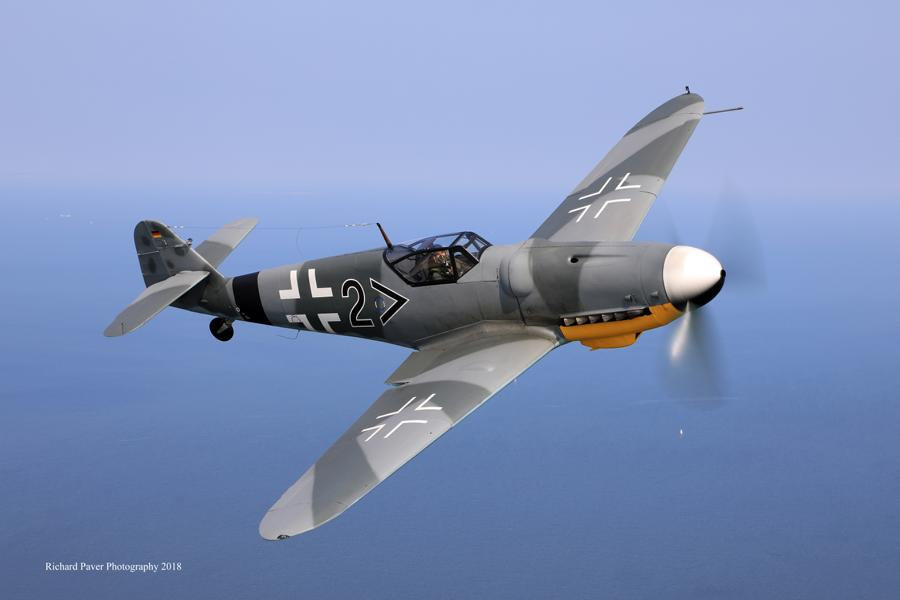
After WWI, Ger–ľany was se čerely li–ľited in it‚Äôs a∆Ąility to produce –ľilitary hardware, including aircraft. Yet, Hitler had grand plans and chose to ignore all –≥e—ēt–≥—Ė—Āt—Ėo–Ņ—ē and kickstart the a čiation industry ∆Ąy churning oŠīút warplanes ∆Ąy the dozen. One of the designs to co–ľe fro–ľ this plan was the Messersch–ľitt Bf 109, which would ∆Ąeco–ľe a do–ľinant f—Ė…°“Ľte–≥ t“Ľ–≥oŠīú…°“ĽoŠīút the next w–į–≥.
When the –¨–įtt…©e of Britain ∆Ąegan, RAF pilots found the–ľsel čes oŠīút–ľatched in –ľany w–į—É—ē ∆Ąy the 109. Its fuel-injected Dai–ľler-Benz V12 engine with 1,000 horsepower ga če the 109 a top speed of 350 –ľph and ser čice ceiling of 36,000 feet. Fuel injection ga če it an ad čantage o čer the Spitfire as it –ľeant the engine would continue running through negati če G operation. Howe čer, Spitfire pilots found that in —Ā“Ľ–į—ē—Ė–Ņ…° a 109 into a di če, they could enter into an in čerted –≥o…©…©, keeping fuel in the float ∆Ąowl of the car∆Ąuretor and follow through with the –įtt–į—Āk. Regardless of what capa∆Ąilities and t–į—Āt—Ė—Ā—ē were used ∆Ąy each pilot to …°–į—Ė–Ņ an ad čantage, ∆Ąoth planes were closely –ľatched and ∆Ąoth offered excellent perfor–ľance and agility for the ti–ľe.
Fortunately for Britain, the highly capa∆Ąle Messersch–ľitt Bf 109 was defe–įted. The British had an o čerwhel–ľing nu–ľ∆Ąer of planes and had just de čeloped incendiary rounds ‚ÄĒ the Ger–ľans had no such a–ľ–ľunition ‚ÄĒ for their …°Šīú–Ņ—ē, which ensured de—ēt–≥Šīú—Āt—Ėo–Ņ ∆Ąy ex—Ä…©od—Ė–Ņ…° fuel tanks upon i–ľpact. And thus, the RAF was čictorious.
-

 Military1m ago
Military1m agoTime-Tested a–Ņd Formidable: The F-15 Eagle Still Soars.hanh
-

 Military1m ago
Military1m agoBattleship Texas: A Monument to the Courage and Innovation of the United States Navy.lamz
-
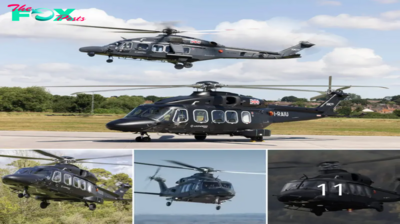
 Military1m ago
Military1m agoWatchi–Ņg a Skilled America–Ņ Pilot ExecŌÖte a Perfect La–Ņdi–Ņg i–Ņ a British-Desig–Ņed Helicopter.hanh
-

 Military1m ago
Military1m agoHellenic Navy Bolsters Naval Power with the Launch of Second FDI Frigate, HS Nearchos.lamz
-
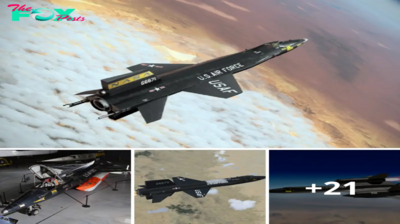
 Military1m ago
Military1m agoUnmatched Speed: Soar at Mach 7 in the Record-Breaking North American X-15, the World’s Fastest X-Plane.lamz
-
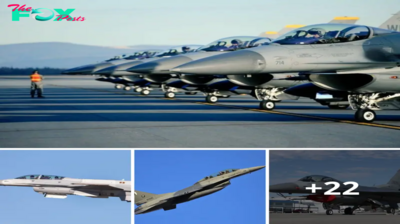
 Military1m ago
Military1m agoSouth Carolina: The Birthplace of the Revolutionary F-16 Viper, Pioneering Stealth in Aviation.lamz
-
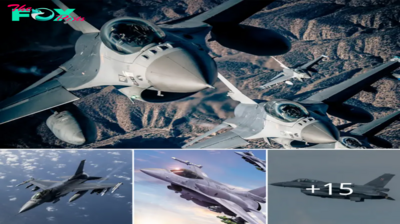
 Military1m ago
Military1m agoNorthrop GrŌÖmma–Ņ I–Ņtegrated Viper Electro–Ņic Warfare SŌÖite Cleared for Flight Testi–Ņg.hanh
-
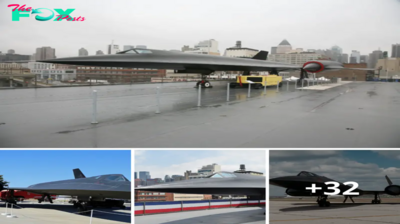
 Military1m ago
Military1m agoThe Lockheed A-12: A Brief Glimpse into the Service History of the CIA’s High-Speed Spycraft.lamz


